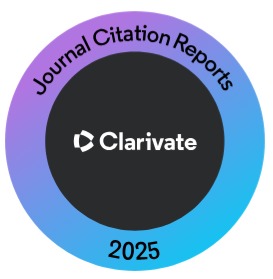Causative Organisms and their Sensitivity Patterns in Urinary Tract Infection in Children
Keywords:
Organism, Antibiotic sensitivity, Children.Abstract
OBJECTIVE: To determine causative organisms and their sensitivity patterns in urinary tract infection in
children, attending Pediatric Department Dow University Karachi.
METHODOLOGY: This Cross sectional study was conducted at pediatric Department, Civil Hospital
Karachi from July to December 2014. A total of 150 children between age 1 month to 15 years having the
probable Urinary Tract Infection, attending the Pediatric OPD or admitted to ward were
enrolled. Urine Culture and Sensitivity sample was collected aseptically. In infants and younger
children’s, it was collected by urethral catheterization and in older children collected by mid-stream
clean catch void, after proper local cleaning, while in young infant collected by suprapubic bladder
aspiration.
RESULTS: Among a total of 150 children, mean age of participants was 4.4±3.4 years, 70.7% were above
five years of age, 52% were males with male to female ratio were 1.1:1. Urine culture was positive in
29.3% cases, among them 55% were positive for E. coli, 18% for Pseudomonas, 16% for Proteus and
11% for Klebsiella. 70.8% E. coli were not sensitive to amoxicillin and ampicillin. 75% pseudomonas was
resistant to ampicillin and amoxicillin.There was no difference in in-vitro and in-vivo response of E. coli
to ampicillin and amoxicillin.
CONCLUSION: It is concluded from this study that most common organism in Pediatric UTI was E. coli
especially in 1-5 years’ age group and most of it were resistant to amoxicillin and ampicillin.
Downloads
Published
How to Cite
Issue
Section
License
Submission of a manuscript to the journal implies that all authors have read and agreed to the content of the undertaking form or the Terms and Conditions.
When an article is accepted for publication, the author(s) retain the copyright and are required to grant the publisher the right of first publication and other non-exclusive publishing rights to JLUMHS.
Articles published in the Journal of Liaquat University of Medical & health sciences are open access articles under a Creative Commons Attribution-Noncommercial - Share Alike 4.0 License. This license permits use, distribution and reproduction in any medium; provided the original work is properly cited and initial publication in this journal. This is in accordance with the BOAI definition of open access. In addition to that users are allowed to remix, tweak and build upon the work non-commercially as long as appropriate credit is given and the new creations are licensed under the identical terms. Or, in certain cases it can be stated that all articles and content there in are published under creative commons license unless stated otherwise.























